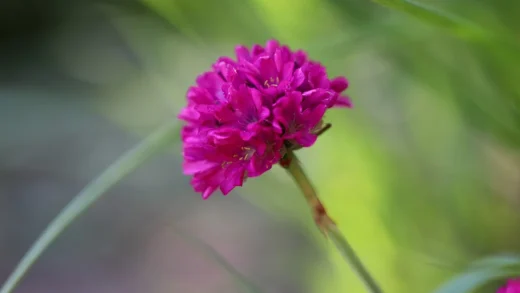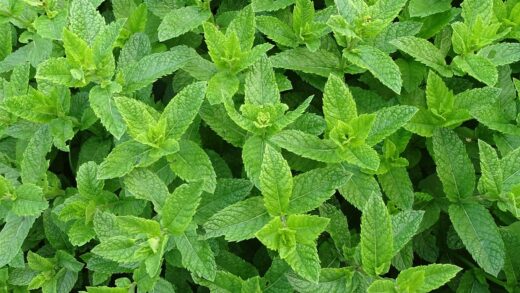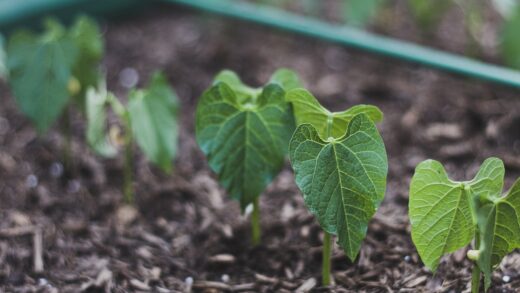The process of planting and propagating beans is a foundational agricultural practice that determines the success of the entire growing cycle. It begins with the careful selection of high-quality seeds and an understanding of the specific requirements for germination. Proper timing, based on climate and soil conditions, is critical to ensure that seedlings emerge into a favorable environment. The techniques used for sowing, including depth and spacing, directly influence plant health, resource allocation, and ultimately, the yield. Furthermore, understanding the principles of propagation allows for the continuation of desired traits and the expansion of a successful crop, making it a cornerstone of both small-scale gardening and large-scale farming.
The journey to a successful bean harvest starts long before the first seed is placed in the ground; it begins with the selection of high-quality seeds. Choosing seeds from a reputable source ensures a higher germination rate and genetic purity, meaning the resulting plants will exhibit the expected characteristics of the chosen variety, such as growth habit, pod size, and disease resistance. It is important to select a bean variety that is well-suited to the local climate and growing season length. Varieties are broadly categorized as bush beans, which are compact and produce their crop all at once, or pole beans, which grow as climbing vines and produce beans over a longer period.
When selecting seeds, examine them for any signs of damage, discoloration, or shriveling, as these can indicate poor viability. Healthy bean seeds should be uniform in size and color, firm, and free from any cracks or holes. Many gardeners also practice seed viability testing, especially when using seeds saved from a previous year. A simple test involves placing a small number of seeds on a moist paper towel, enclosing it in a plastic bag, and keeping it in a warm place. If a high percentage of the seeds sprout within a week, the batch is considered viable for planting.
Furthermore, consider the benefits of choosing certified disease-free seed. This is particularly important for preventing devastating bacterial and viral diseases that can be transmitted through the seed itself. While it may come at a slightly higher cost, starting with clean seed is a crucial preventative measure that can save a crop from failure. For those interested in sustainable or organic gardening, selecting untreated or organic seeds ensures that no synthetic chemical fungicides have been applied, aligning with these agricultural principles from the very beginning of the cultivation process.
Finally, proper storage of seeds before planting is essential to maintain their viability. Seeds should be kept in a cool, dark, and dry place to prevent them from losing their germinative energy. An airtight container stored in a refrigerator or a cool basement is an ideal environment. Fluctuations in temperature and humidity can trigger a premature decline in seed quality. By dedicating attention to the selection and proper handling of seeds, a grower sets a solid foundation for a vigorous and productive bean crop.
More articles on this topic
Timing of planting
The timing of when to plant bean seeds is one of the most critical decisions in the cultivation process, as it directly impacts germination and the survival of young seedlings. Beans are a warm-season crop and are extremely sensitive to cold temperatures and frost. Planting too early, when the soil is still cold and the risk of a late frost has not passed, can lead to seed rot and poor or failed germination. A late frost can easily kill emerged seedlings, forcing a complete replanting. Therefore, patience is key, and planting should be delayed until all danger of frost is gone and the soil has had a chance to warm up adequately.
The ideal soil temperature for bean germination is a key indicator to follow. Most bean varieties germinate best when the soil temperature consistently remains between 21°C and 27°C. While they can germinate in soils as cool as 15°C, the process will be much slower, and the risk of seed rot increases significantly. Using a soil thermometer is the most accurate way to determine if conditions are right. Simply inserting the thermometer about 5-7 centimeters into the soil in the morning will provide a reliable reading. Waiting for the right soil temperature ensures a rapid and uniform emergence of seedlings.
In addition to soil temperature, the local climate and growing season length must be considered. In regions with short growing seasons, it may be advantageous to start seeds indoors about two to three weeks before the last expected frost date. This gives the plants a head start, allowing them to be transplanted into the garden as healthy seedlings once the weather is reliably warm. However, beans have sensitive root systems and do not always transplant well, so it is best to use biodegradable pots that can be planted directly into the ground to minimize root disturbance.
Succession planting is an excellent strategy to extend the harvest period, particularly for bush bean varieties that tend to produce their crop in a concentrated timeframe. This involves sowing new batches of seeds every two to three weeks. This staggered planting schedule ensures a continuous supply of fresh beans throughout the growing season rather than a single, large harvest. The final succession planting should be timed so that the beans will have enough time to mature before the first frost of the autumn, which typically requires knowing the variety’s “days to maturity” and the average first frost date for the region.
Sowing techniques
Proper sowing technique is fundamental to achieving a healthy and evenly distributed stand of bean plants. The correct planting depth is crucial for successful germination. As a general rule, bean seeds should be planted at a depth of about 2.5 to 4 centimeters. Planting too shallowly can cause the seeds to dry out or be eaten by birds, while planting too deeply can exhaust the seedling’s energy reserves before it can reach the soil surface and sunlight. In heavier clay soils, a slightly shallower depth is preferable, whereas in sandy, fast-draining soils, planting a bit deeper can help ensure consistent moisture for the germinating seed.
Spacing between seeds is another critical factor that influences plant health and productivity. Overcrowding plants leads to intense competition for sunlight, water, and nutrients, and it can restrict airflow, making the plants more susceptible to diseases. For bush beans, seeds should be sown about 5-10 centimeters apart in rows that are spaced 45-60 centimeters apart. For pole beans, which grow vertically, the spacing is determined by the support structure. If using a teepee, plant 4-6 seeds around the base of each pole. For a trellis, seeds can be planted about 10-15 centimeters apart along the base of the structure.
Ensuring good seed-to-soil contact is vital for the seed to absorb the moisture necessary for germination. After placing the seeds at the correct depth, it is important to gently firm the soil over them. This eliminates air pockets and ensures the entire surface of the seed is in contact with the moist soil. Following planting, the seedbed should be watered gently but thoroughly, using a fine spray to avoid dislodging the seeds or creating a hard crust on the soil surface. The soil should be kept consistently moist, but not waterlogged, until the seedlings emerge.
For many gardeners, particularly those with concerns about germination rates, inoculating the seeds before planting is a beneficial step. Beans, like other legumes, have a symbiotic relationship with Rhizobium bacteria, which form nodules on the plant’s roots and fix atmospheric nitrogen, making it available to the plant. While these bacteria are often naturally present in the soil, treating the seeds with a commercial inoculant specific to beans can ensure a robust population, leading to more vigorous growth and higher yields, especially in gardens where beans have not been grown before. The inoculant is a fine powder that is lightly dusted onto slightly moistened seeds just before planting.
Germination and early seedling care
The germination process for a bean seed begins when it absorbs water from the soil, a process called imbibition. This triggers enzymatic activity within the seed, which starts to break down stored food reserves to fuel the growth of the embryo. The first part to emerge is the primary root, or radicle, which anchors the seedling and begins to absorb water and nutrients. Shortly after, the embryonic shoot, known as the hypocotyl, emerges, forming an arch that pushes its way up through the soil, pulling the cotyledons (the two halves of the seed) and the embryonic leaves with it. This “crook” shape helps protect the delicate leaves as they push through the soil.
Once the seedling breaks the surface, the cotyledons will open up, and the first true leaves will begin to unfurl. The cotyledons may look like leaves, but they are actually the seed leaves that provided the initial energy for germination and will wither and fall off once the true leaves are photosynthesizing effectively. This emergence typically occurs within 5 to 10 days of planting, depending on the bean variety, soil temperature, and moisture levels. During this vulnerable stage, it is crucial to protect the seedlings from pests like slugs, snails, and birds, which can cause significant damage.
Consistent moisture is paramount during germination and the early seedling stage. The soil should be kept evenly moist, like a wrung-out sponge, but never saturated. Allowing the soil to dry out completely can stress or kill the young seedlings, while waterlogged soil can suffocate the roots and promote “damping-off,” a fungal disease that causes the stem to rot at the soil line. Watering should be done gently to avoid disturbing the fragile seedlings and their developing root systems.
As the seedlings grow and develop their first few sets of true leaves, they become more resilient. If the seedlings have emerged too close together, this is the time to thin them to the recommended spacing. Thinning is best done by snipping the unwanted seedlings at the soil level with a pair of scissors rather than pulling them out, which can disturb the roots of the neighboring plants that are being kept. Providing this early care ensures that each plant has the space and resources it needs to develop into a strong, healthy, and productive adult.
Propagation methods beyond seed
While planting from seed is the most common method for propagating annual bean varieties, some perennial or specific types of beans can be propagated through other means, such as cuttings. This vegetative propagation method creates a new plant that is genetically identical to the parent plant, which is useful for preserving the traits of a particularly vigorous or high-yielding individual. Runner beans (Phaseolus coccineus), for example, produce tuberous roots that can be saved over winter in colder climates, much like dahlia tubers, and replanted the following spring to get a significant head start on the growing season.
To propagate from tuberous roots, carefully dig up the root crown after the first frost has killed the top growth. The soil should be gently shaken off, and the roots should be allowed to cure in a dry, airy place for a few days. After curing, they can be stored in a box of slightly damp sand or peat moss in a cool, frost-free location like a garage or basement. In the spring, once the danger of frost has passed, these roots can be planted directly into the garden, and they will sprout new growth much more quickly than seed-sown plants.
For certain vining beans, it is also possible to propagate them from stem cuttings. This is less common but can be an effective way to clone a plant during the growing season. To do this, select a healthy, vigorous stem and take a cutting that is about 10-15 centimeters long, ensuring it has several leaf nodes. The lower leaves should be removed, and the base of the cutting can be dipped in a rooting hormone to encourage root development. The cutting is then placed in a pot with a moist, sterile growing medium.
The pot should be kept in a warm, humid environment, away from direct sunlight, until roots have formed, which can take several weeks. Covering the pot with a plastic bag can help to maintain the necessary humidity. Once a healthy root system has developed and new top growth is evident, the new plant can be gradually acclimated to outdoor conditions before being transplanted into the garden. While not the primary method for most bean cultivation, understanding these alternative propagation techniques can be a valuable skill for experienced gardeners looking to preserve specific plant lines or experiment with different cultivation methods.


















